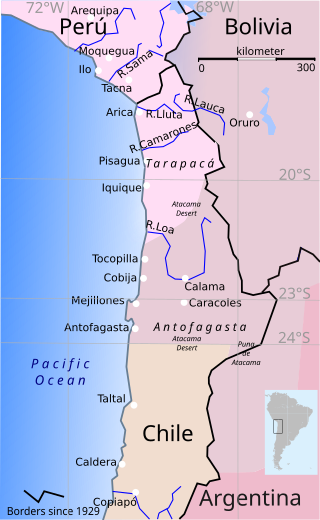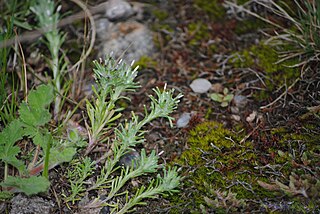| Ophryosporus | |
|---|---|
 | |
| Scientific classification | |
| Kingdom: | Plantae |
| Clade: | Tracheophytes |
| Clade: | Angiosperms |
| Clade: | Eudicots |
| Clade: | Asterids |
| Order: | Asterales |
| Family: | Asteraceae |
| Subfamily: | Asteroideae |
| Tribe: | Eupatorieae |
| Genus: | Ophryosporus Meyen |
| Type species | |
| Ophryosporus triangularis [1] | |
| Synonyms [2] | |
| |
Ophryosporus is a genus of South American flowering plants in the tribe Eupatorieae within the family Asteraceae. [1] [3] [4]
- Species [2] [3]
- Ophryosporus angustifolius - Bolivia
- Ophryosporus anomalus - Tacna, Antofagasta, Tarapacá (Chile)
- Ophryosporus apricus - Peru
- Ophryosporus axilliflorus - Bolivia, north-western Argentina
- Ophryosporus bipinnatifidus - Peru
- Ophryosporus burkartii - Jujuy
- Ophryosporus carchiensis - Ecuador
- Ophryosporus charua - north-western Argentina
- Ophryosporus chilca - Ecuador, Peru
- Ophryosporus cumingii - Bolivia
- Ophryosporus densiflorus - Ecuador [5]
- Ophryosporus eleutherantherus - Bolivia, Peru
- Ophryosporus ferreyrii - Peru
- Ophryosporus floribundus - Lima, Antofagasta
- Ophryosporus freyreysii - Brazil
- Ophryosporus galioides - Ecuador, Peru
- Ophryosporus heptanthus - Ecuador, Peru, Bolivia
- Ophryosporus hoppii - Arequipa, Antofagasta, Tarapacá
- Ophryosporus johnstonii - Atacama
- Ophryosporus kuntzei - Bolivia
- Ophryosporus laxiflorus - Minas Gerais, Paraná
- Ophryosporus lorentzii - Jujuy, Salta, Tucuman
- Ophryosporus macbridei - Ancash, Huánuco
- Ophryosporus macrodon - Bolivia, Jujuy, Salta, Tucuman
- Ophryosporus mandonii
- Ophryosporus marchii - Peru - Contumaza
- Ophryosporus mathewsii - Peru
- Ophryosporus organensis - Rio de Janeiro
- Ophryosporus ovatifolius - Brazil
- Ophryosporus ovatus - Peruvian Amazonas, Cajamarca
- Ophryosporus paradoxus - Chile
- Ophryosporus peruvianus - Ecuador, Peru
- Ophryosporus pinifolius - Lima, Huancavelica, Huánuco, Tarapacá
- Ophryosporus piquerioides - Bolivia, Peru, Argentina
- Ophryosporus pubescens - Peru
- Ophryosporus regnellii - Brazil
- Ophryosporus sagasteguii - Peru
- Ophryosporus serratifolius - Colombia, Ecuador, Peru
- Ophryosporus sodiroi - Ecuador, Peru
- Ophryosporus steinbachii - Bolivia
- Ophryosporus triangularis - Chile
- Ophryosporus venosissimus - Bolivia
- formerly included [2]
Several once considered part of Ophryosporus now regarded as better suited to other genera: Decachaeta Koanophyllon Mikania Stomatanthes












